One of the few boots that can actually live up to its name, the PUMA KING has been worn by literal football royalty. Yet, it still gets overlooked in favor of models like the adidas Predator or Nike Mercurial. While the latter two silhouettes may feature sexier and flashier designs, there’s something about the classic KING that maintains our affection to this day. It’s time to put some respect on the PUMA KING’s name.
The PUMA KING has an illustrious list of sponsorships and co-signs in its past. From Pele to Maradona, Cruyff to Best, the KING was the boot of the ’70s, and ’80s. However, as adidas and Nike began to take over in the ’90s and the new millennium, the KING has lost a bit of momentum. But that doesn’t mean it’s dead.
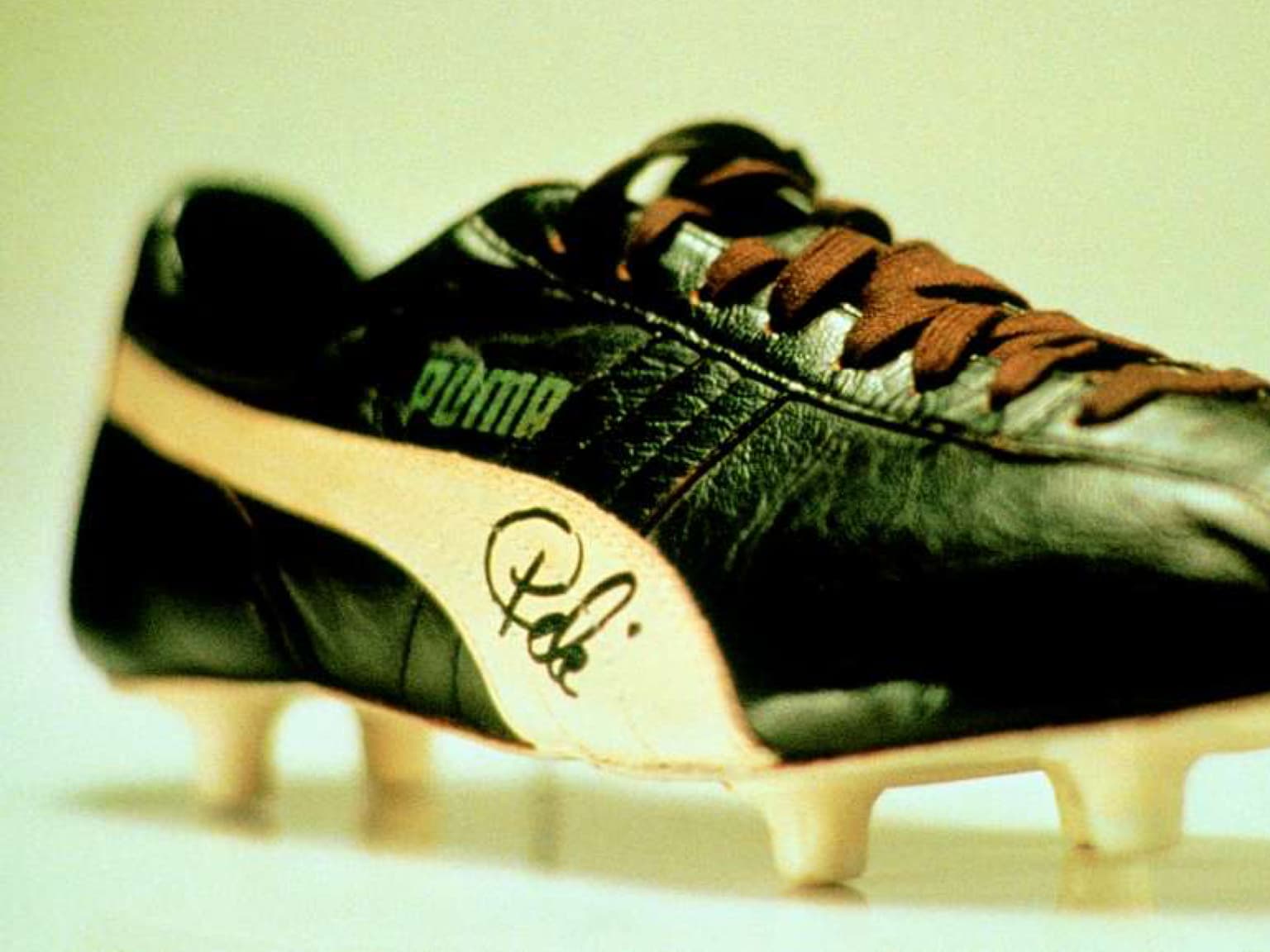
Other athletic brands have folded or scaled down, but PUMA is still kicking strong. Sure, they might not have the super-roster they had in the past, but some of the top players in the game still rock with the Cat. The KING model is still in production today, and while it might not command the market share like the adidas Predator or Nike Mercurial franchises, it still stays true to its original style.
But to truly appreciate a boot with such longevity, we must first understand its history.
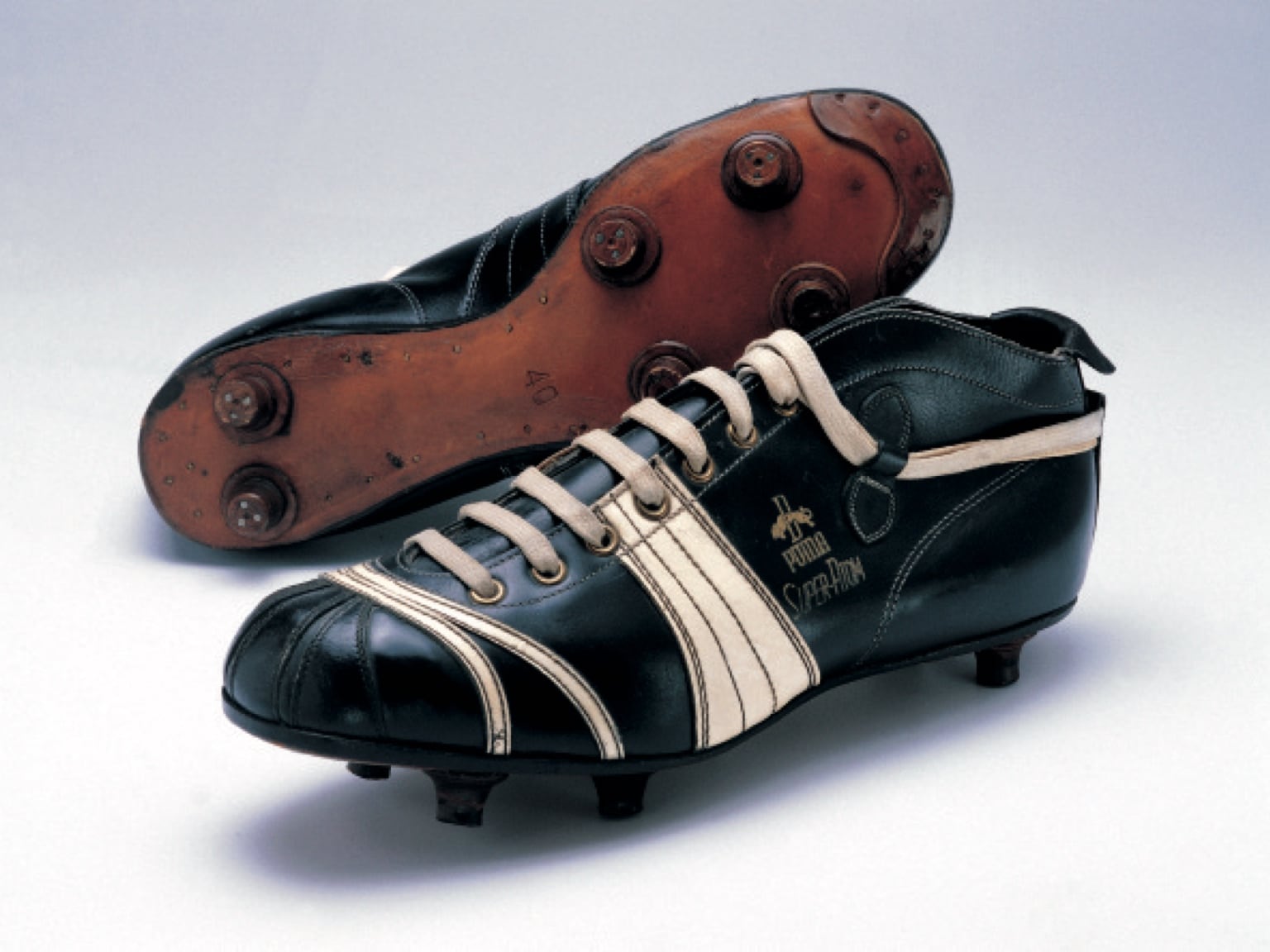
When the KING was introduced in 1968, PUMA was already one of the top athletic suppliers in the world. It introduced the SUPER ATOM boot model in 1952 as the first-ever boot with screw-in studs. Additionally, Armin Hary set an Olympic record with a 10.2-second 100-meter dash in 1960 — and it wouldn’t be the last time the world’s fastest man would be decked out in PUMA kicks (see: Usain Bolt).
Gleefully riding its wave of success, PUMA developed the KING after Portuguese superstar Eusebio’s magical run at the 1966 World Cup, where he was the top scorer of the tournament. Two years later history was made, and the KING instantly started to gain traction.
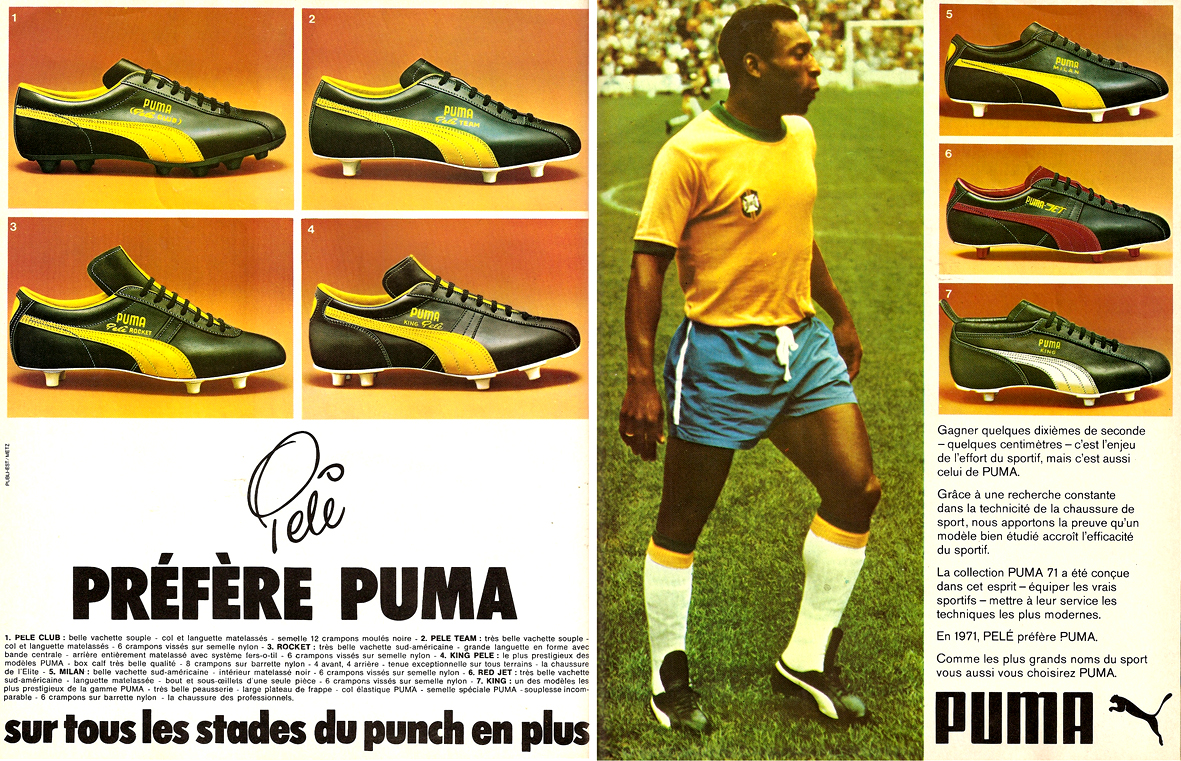
In the 1970 World Cup in Mexico, Pele took the KING to another level, wearing a specialized version of the boot that featured a yellow PUMA formstrip instead of the classic white. Pele apparently stopped play at one moment in the finals and tied his boots just so that the camera could get a good look at them. He won player of the tournament honors in what would be his final World Cup ever, a fitting cap to one of the greatest careers of all time.
Four years later, Dutch phenom Johan Cruyff also won the Golden Ball honors in the PUMA KING, and in 1978 Mario Kempes sealed Argentina’s first-ever World Cup victory by scoring two goals in the final wearing the KING. He won the Golden Ball too, securing the PUMA KING three-peat.
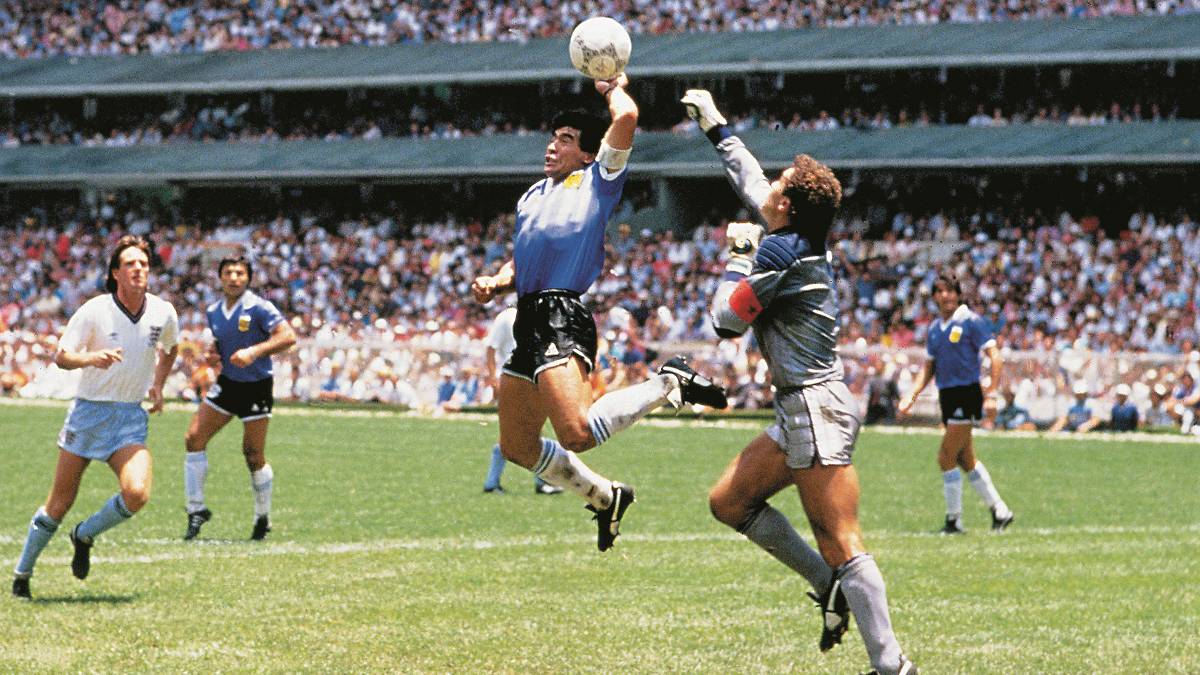
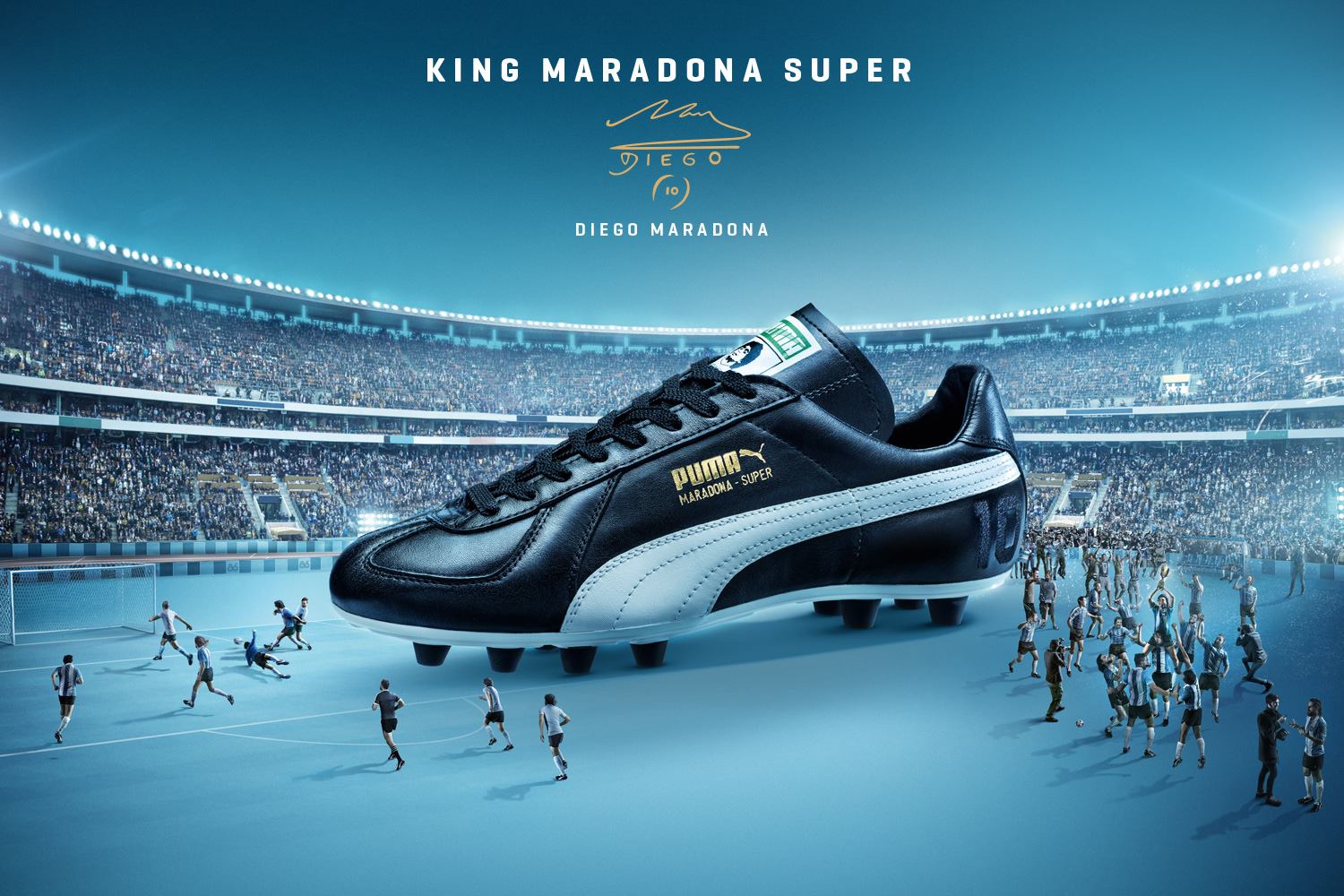
The ’80s were also run by the KING. PUMA literally had football’s golden child on their roster, and Diego Armando Maradona quickly became a household name. In the 1986 World Cup, arguably the most memorable of all time, Maradona performed miracles — both the “Goal of the Century” and “Hand of God” goals were scored with KINGs on his feet.
The 1990 World Cup would be the last one where the KING would be the preferred boot of the world’s best players, and by 1994 adidas had taken over with Nike hot on its heels.
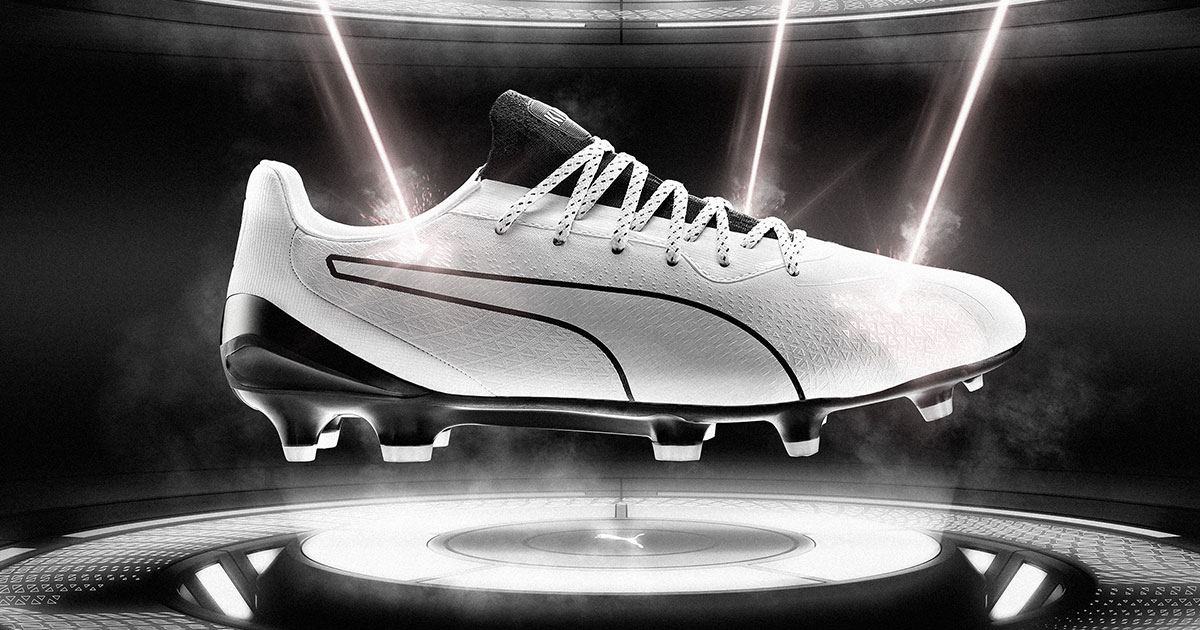
But as we mentioned before, PUMA hasn’t slowed down. The latest version of the KING, the Platinum Lazertouch, was unveiled in March with all-new tech and modern advancements while still maintaining its legacy.
The boot is lighter, features premium K-Leather, 3D touch texture, and a lightweight RAPIDSOLE exterior. They’ve done away with the flappy big tongue in place of a lower-profile one that doesn’t fold over which makes the boot look faster.
The result is a minimalist boot that’s as sleek as it is elegant. If James Bond played football, these are the boots he’d wear (albeit probably with a few high-tech upgrades and a self-destruct button added on).
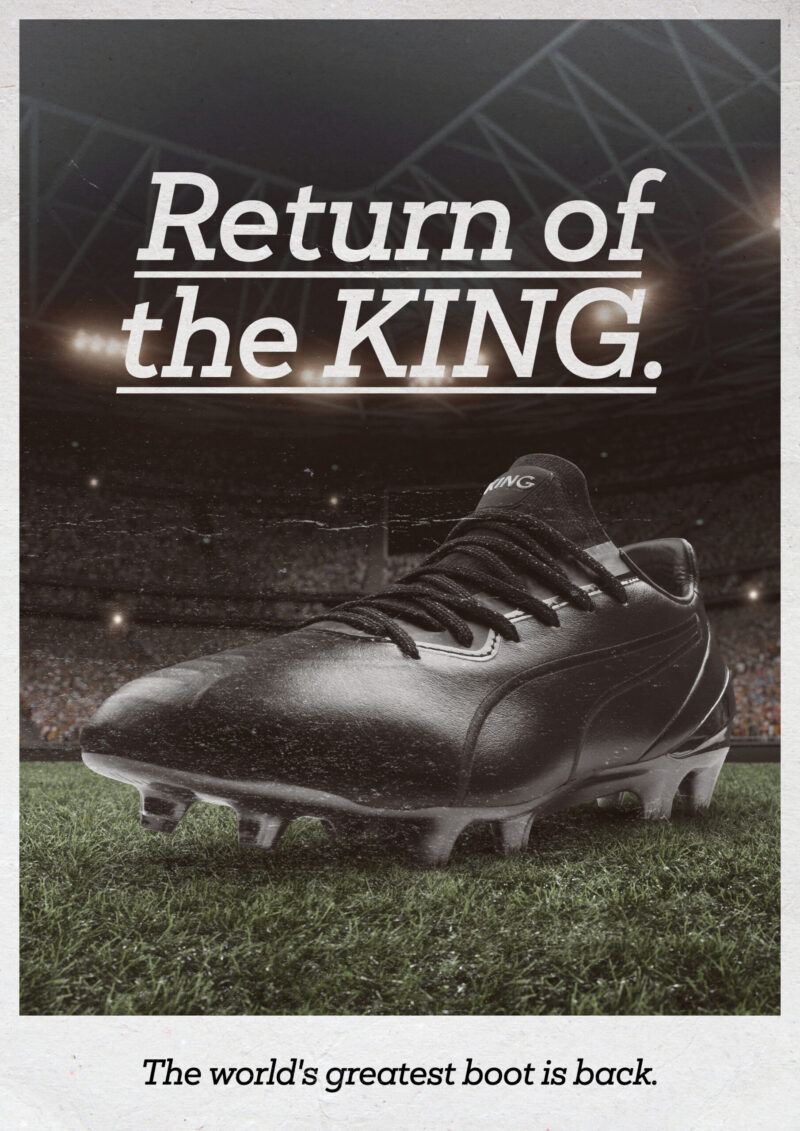
In 2019, PUMA re-ignited the KING franchise with the Lazertouch’s predecessor, the KING Platinum. To help with the launch, the brand teamed up with yet another legendary footballer who donned the KING in his day, Thierry Henry.
Henry is just about as universally beloved as a player can get, yet he was an interesting choice for the face of the new KING, as he’s typically quieter and softer spoken than previous PUMA legends like Maradona. But when you think about it, he’s a perfect choice. The strong and silent type — one who lets his game do all of the talking. Class, elegance, and excellence. If you were to personify the KING, it’d take the form of Henry.
Besides, even though El Pibe del Oro is still relevant in the world of football, it isn’t always for the best reasons. Maybe he’s not quite spokesman material at this point in his life.
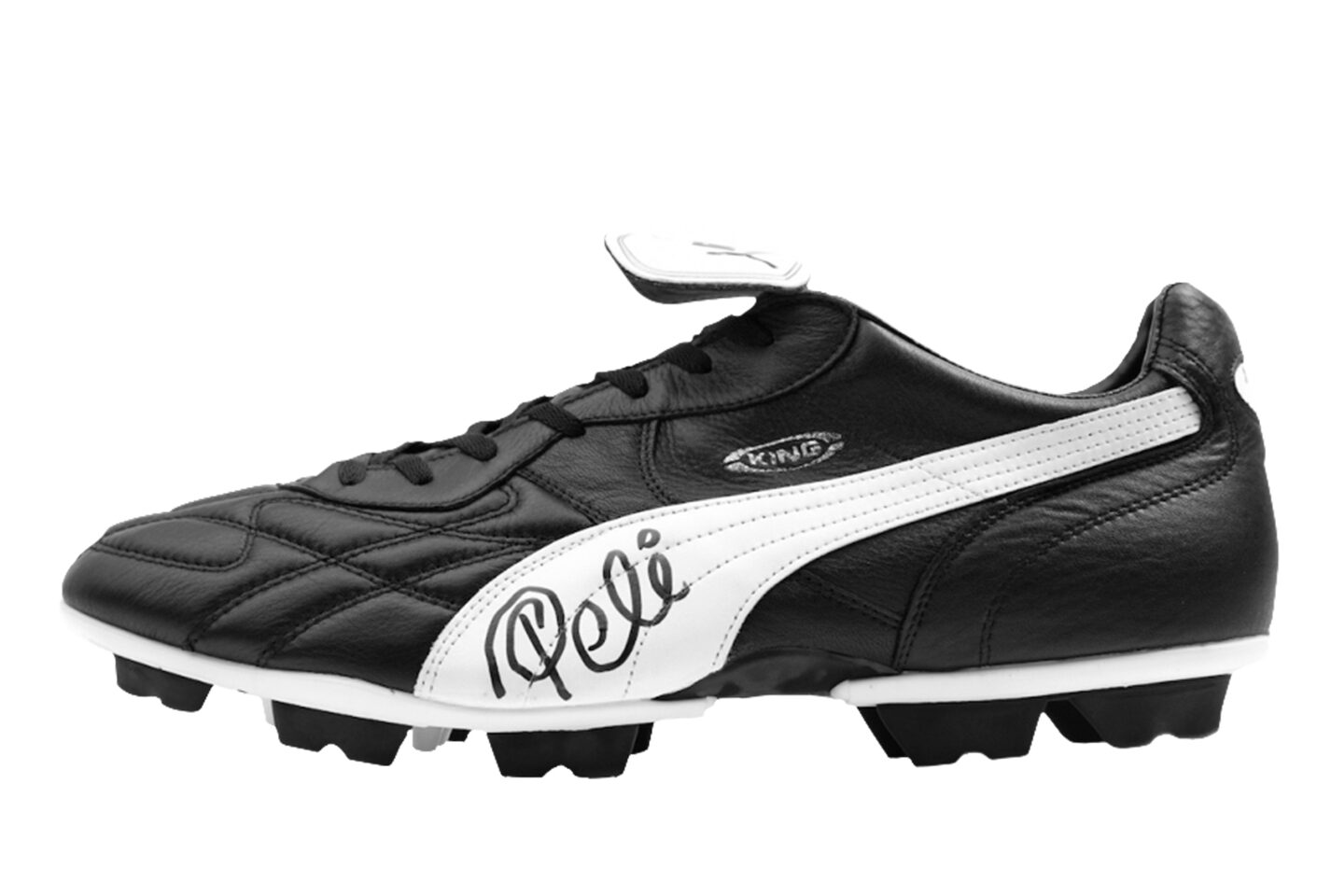

The PUMA KING’s legacy is top notch, having been worn by a handful of the greatest players to ever put on a pair of boots, and living up to that requires a lot. That plus the daunting dominance of Nike and adidas would discourage most brands, but PUMA has persevered and released a highly competent installment to the hallowed franchise.
Far from a little engine that could, PUMA’s sales continue to grow, and while it may not be any time soon, don’t rule out a return to the glory of the ’70s, and ’80s. The days of all of the the top stars winning World Cups and Golden Boots while rocking the PUMA KING may be over, but that’s OK. It shouldn’t always be about who’s in the boots.
It should be about slapping those slightly damp suckers on and sneaking out of the house early for a game with the mates on the local pitch. The grass wet with Sunday dew, the homies all charged up and ready to go. It’s about putting four goals in in a pickup game with the brand new PUMA KINGs on feeling like a coked-up Maradona punching balls and scoring goals and shit. Like firing one past the keeper and running over and tying your KINGs another time for no reason just so the nonexistent cameras can get a second look at them suckers. Damn I miss playing soccer.









My son’s Kings came up tops on Saturday with his 90th minute winner for his FC Delco team. Think he may be a u16 convert to the classic boot!